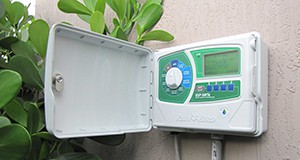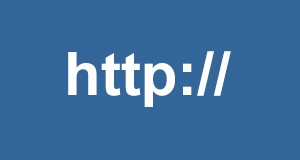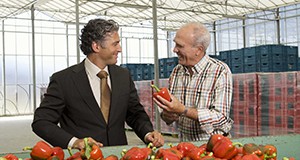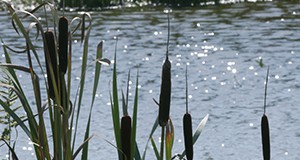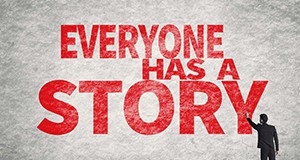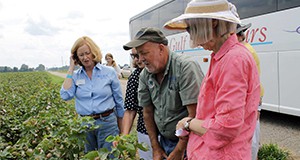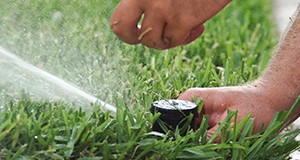
In order to evaluate their programs, Extension offices have to gather evidence about program outcomes and impacts. The first step of this process is to determine the appropriate amount of data needed, or the correct sample size. Using a sample can help Extension professionals save time, money, and labor because fewer people must be interviewed or surveyed; thus the complete set of data can be collected quickly. This nine-page fact sheet provides an overview of sampling procedures, beginning with how to determine the research problem, define the population, and decide whether to sample and going on to explain the different types of samples and how they are used. Written by Glenn D. Israel, and published by the Agricultural Education and Communication Department.
http://edis.ifas.ufl.edu/pd005
Tag: Agricultural Education and Communication Department
The Savvy Survey #7: Formatting Questionnaires
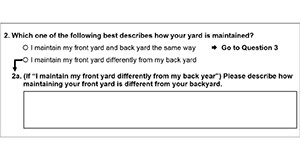
The Savvy Survey #7: Formatting Questionnaires is the seventh of seventeen Savvy Survey Series publications from state specialists with expertise in tailored design survey methodology. Developing a high-quality questionnaire is critical for collecting useful data. After selecting the best questions, the next step is to format them to produce the most effective questionnaire possible. This 7-page publication spotlights several considerations, including question order, layout for best visual appearance, and pagination. Written by Jessica L. Gouldthorpe and Glenn D. Israel, and published by the Agricultural Education and Communication Department.
https://edis.ifas.ufl.edu/pd071
Encouraging Landscape Water Conservation Behaviors Series Overview #7: Personal and Social Norms of Florida Residents Who Use Irrigation in the Home Landscape
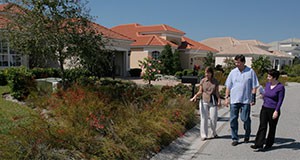
This 4-page fact sheet is the seventh publication in a series focusing on encouraging water conservation among Florida residents who use irrigation in their home landscapes. Extension educators create programs to encourage good irrigation practices and water conservation activities based on personal and social normative beliefs. To help in this goal, the authors examine personal and social norms of Florida residents who use irrigation in the home landscape and describe how Extension educators can capitalize on these positive norms to motivate Floridians to learn and use best water conservation practices. Written by Anil Kumar Chaudhary, Laura A. Warner, Alexa Lamm, Joy N. Rumble, and Randal Cantrell and published by the Agricultural Education and Communication Department.
http://edis.ifas.ufl.edu/wc205
Frequently Asked Questions about Soil Moisture Sensor Irrigation Controllers (SMS)
![]()
A soil moisture sensor (SMS) is a device that detects how much moisture is in the soil and prevents an irrigation system from running when it is not needed. This 4-page fact sheet written by Paul Monaghan, Ondine Wells, Michael Dukes, Maria Morera, and Laura Warner and published by the Department of Agricultural Education and Communications explains how the technology functions as well as how to install, program, operate, and maintain an SMS for a money- and water-wise sustainable home landscape that’s lush and beautiful.
http://edis.ifas.ufl.edu/wc238
Frequently Asked Questions about Evapotranspiration (ET) Irrigation Controllers
Evapotranspiration is the amount of water that is released into the atmosphere through evaporation and plant transpiration. An evapotranspiration irrigation controller is a device that uses data about the landscape, the type of irrigation system, and local weather conditions to determine when and how much to irrigate. This 5-page fact sheet written by Paul Monaghan, Ondine Wells, Michael Dukes, Maria Morera, and Laura Warner and published by the Department of Agricultural Education and Communications explains how the technology functions as well as how to install, program, operate, and maintain an ET controller for a money- and water-wise sustainable home landscape that’s lush and beautiful.
http://edis.ifas.ufl.edu/wc237
Writing and Designing for the Web series
Knowing how to create and design a website is a valuable skill. This four-part series explains general tenants of good web design, covers the terminology and techniques involved in creating appealing, user-friendly websites, and also discusses basic HTML coding and developing visual elements for the web. Written by Ricky Telg, Laura Gorham, and Tracy Irani, and published by the UF Department of Agricultural Education and Communication, August 2015.
http://edis.ifas.ufl.edu/topic_series_writing_and_designing_for_the_web
Transparency in Agriculture and Natural Resources: Defining Transparent Communication
When we think about transparency, we usually think about business, public relations, and government; however; transparency is also an important consideration in agriculture and food industries. Defined as openness and the opposite of secrecy, transparency can be conceptualized as a communication strategy that the agricultural industry can use to interact with consumers and other audiences. This 3-page fact sheet defines transparent communication as containing substantial information, incorporating audience participation, and maintaining accountability. Written by Joy N. Rumble, and published by the UF Department of Agricultural Education and Communication, September 2015.
http://edis.ifas.ufl.edu/wc225
Priority Competencies Needed by UF/IFAS Extension County Faculty
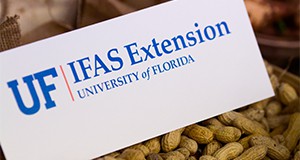
Research shows that competency is a better indicator of employee potential than intelligence alone. This 5-page fact sheet outlines ten competency areas relevant to Extension county faculty, as well as examples of how Extension faculty might embody these qualities in their work. Written by Amy Harder, and published by the UF Department of Agricultural Education and Communication, September 2015.
http://edis.ifas.ufl.edu/wc236
Teaching to Personality Types series

A person’s personality affects the way he or she learns best. Extension programs can use an understanding of different learning styles and preferences to reach the greatest number of people. This 4-part series covers the various personality types and explains how Extension can teach to these types. Written by Alexa J. Lamm and Ricky W. Telg, and published by the UF Department of Agricultural Education and Communication, September 2015. (Photo credit: Rawpixel Ltd/iStock/Thinkstock.com)
http://edis.ifas.ufl.edu/topic_series_teaching_to_personality_types
Strategies to Encourage Adoption of Stormwater Pond Best Management Practices (BMPs) by Homeowners
Man-made ponds can be a useful way to collect, store, and treat stormwater runoff in residential areas. However, these ponds can become polluted when runoff contains fertilizers, pesticides, and pet waste from the neighborhood. This 8-page fact sheet outlines several best management practices (BMPs) for reducing stormwater pond pollution. Based on a survey of residents who live near stormwater ponds, the authors recommend strategies Extension educators can use to encourage residents to adopt these BMPs. Written by Emily Ott, Paul Monaghan, Ondine Wells, Gail Hansen, Laura Warner, and Michelle Atkinson, and published by the UF Department of Agricultural Education and Communication, July 2015.
http://edis.ifas.ufl.edu/wc214
Getting the Most out of Social Media

Agriculturalists can use social media as a powerful tool for marketing their products and establishing a brand identity. The goal of this series is to help agriculturalists understand how social media can work for them. The series also discusses the various social media platforms and how to use social media strategically and wisely. Written by Jessica C. Fernandez and Joy N. Rumble, and published by the UF Department of Agricultural Education and Communication, August 2015. (Photo credit: tanuha2001/iStock/Thinkstock.com)
http://edis.ifas.ufl.edu/topic_series_getting_the_most_out_of_social_media
Letting Them In: Sharing Your Story with People outside of Your Industry

Those who work in agriculture often face the challenge of explaining their work to people outside of their field. Identifying what your audience cares about is the first step in formulating a story you audience will understand and value. This 3-page fact sheet also offers do’s and don’ts for crafting a story for non-expert audiences. Written by Brandon Telg, Jaron Jones, and Ricky Telg, and published by the UF Department of Agricultural Education and Communication, July 2015. (Photo credit: monkeybusinessimages/iStock/Thinkstock.com)
http://edis.ifas.ufl.edu/wc216
Story Development
Stories let you share who you are with the world. Storytelling can help develop an organization’s identity, improve interactions with the public, and foster teamwork. This 2-page fact sheet covers the basics of good storytelling and strategies for crafting an engaging story. Written by Brandon Telg, Jaron Jones, and Ricky Telg, and published by the UF Department of Agricultural Education and Communication, July 2015. (Photo credit: elwynn1130/iStock/Thinkstock.com)
http://edis.ifas.ufl.edu/wc215
Storytelling through Social Media
You and organization can use social media to tell you story and reach a large and diverse audience. This 3-page factsheet covers the major social media platforms, what each platform offers, and how to use theme effectively. Written by Brandon Telg, Jaron Jones, Ricky Telg, and Becky Raulerson, and published by the UF Department of Agricultural Education and Communication Department, July 2015.
http://edis.ifas.ufl.edu/wc218
Face-to-Face Storytelling
In the agricultural industry, telling your story is critical for establishing your operation’s identity. Communicating face-to-face is one method of getting your message to the public. This 2-page fact sheet presents tips and strategies for delivering your story to a live audience. Written by Brandon Telg, Jaron Jones, and Ricky Telg, and published by the UF Department of Agricultural Education and Communication, July 2015.
http://edis.ifas.ufl.edu/wc217
Planning for a Farm Tour: Keeping the Conversation Fresh
Hosting tours at your farm can be a great way to market your products and your farm’s brand. Tours let you tell potential customers how you grow your food, why they should buy it, and who you are as a farmer. This 3-page fact sheet discusses these topics and provides logistical advice for planning and executing a successful farm tour. Written by Claire Mitchell and Joy N. Rumble, and published by the UF Department of Agricultural Education and Communication, August 2015.
http://edis.ifas.ufl.edu/wc219
Encouraging Landscape Water-Conservation Behaviors #3: Developing Extension and Outreach Messages That Encourage Landscape Water Conservation Practice Adoption
Message framing can be an effective tool for crafting messages for a target audience. This 5-page fact sheet explains how Extension can use gain and loss message framing to encourage Florida residents who irrigate their home landscape to adopt water-conservation practices. Part three of the series Encouraging Landscape Water-Conservation Behaviors and written by Courtney Owens, Laura Warner, Joy Rumble, Alexa Lamm, and Randall Cantrell, and published by the UF Department of Agricultural Education and Communication, June 2015.
http://edis.ifas.ufl.edu/wc201
Encouraging Landscape Water-Conservation Behaviors: Information Seeking Preferences of Florida Residents Who Use Irrigation in the Home Landscape
 How can we encourage Florida residents who irrigate their home landscapes to adopt environmentally responsible irrigation practices? Provide them information they are interested in and deliver it through their preferred information channels. This 4-page fact sheet discusses the topics of interest to this audience and how they prefer to receive information about water-conservation practices related to their home landscaping, and makes recommendations for reaching this audience. Written by Courtney Owens, Laura Warner, Joy Rumble, Alexa Lamm, Emmett Martin, Randall Cantrell, and published by the UF Department of Agricultural Education and Communication, April 2015. (UF/IFAS Photo by Thomas Wright)
How can we encourage Florida residents who irrigate their home landscapes to adopt environmentally responsible irrigation practices? Provide them information they are interested in and deliver it through their preferred information channels. This 4-page fact sheet discusses the topics of interest to this audience and how they prefer to receive information about water-conservation practices related to their home landscaping, and makes recommendations for reaching this audience. Written by Courtney Owens, Laura Warner, Joy Rumble, Alexa Lamm, Emmett Martin, Randall Cantrell, and published by the UF Department of Agricultural Education and Communication, April 2015. (UF/IFAS Photo by Thomas Wright)
http://edis.ifas.ufl.edu/wc204
Integrating Critical Thinking into Extension Programming #1: Critical Thinking Defined
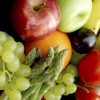 This 3-page fact sheet, the first in a series on integrating critical thinking into extension programming, defines critical thinking to assist extension professionals in better understanding the concept. Written by Alexa J. Lamm, and published by the UF Department of Agricultural Education and Communication, April 2015.
This 3-page fact sheet, the first in a series on integrating critical thinking into extension programming, defines critical thinking to assist extension professionals in better understanding the concept. Written by Alexa J. Lamm, and published by the UF Department of Agricultural Education and Communication, April 2015.
http://edis.ifas.ufl.edu/wc206
Integrating Critical Thinking into Extension Programming #2: Developing Critical Thinking Skills
 This 3-page fact sheet is the second in a series on integrating critical thinking into Extension programming, and examines the virtues of critical thinking to offer suggestions for integrating activities that encourage critical thinking into Extension programming. Written by Alexa J. Lamm, and published by the UF Department of Agricultural Education and Communication, April 2015.
This 3-page fact sheet is the second in a series on integrating critical thinking into Extension programming, and examines the virtues of critical thinking to offer suggestions for integrating activities that encourage critical thinking into Extension programming. Written by Alexa J. Lamm, and published by the UF Department of Agricultural Education and Communication, April 2015.
http://edis.ifas.ufl.edu/wc207
